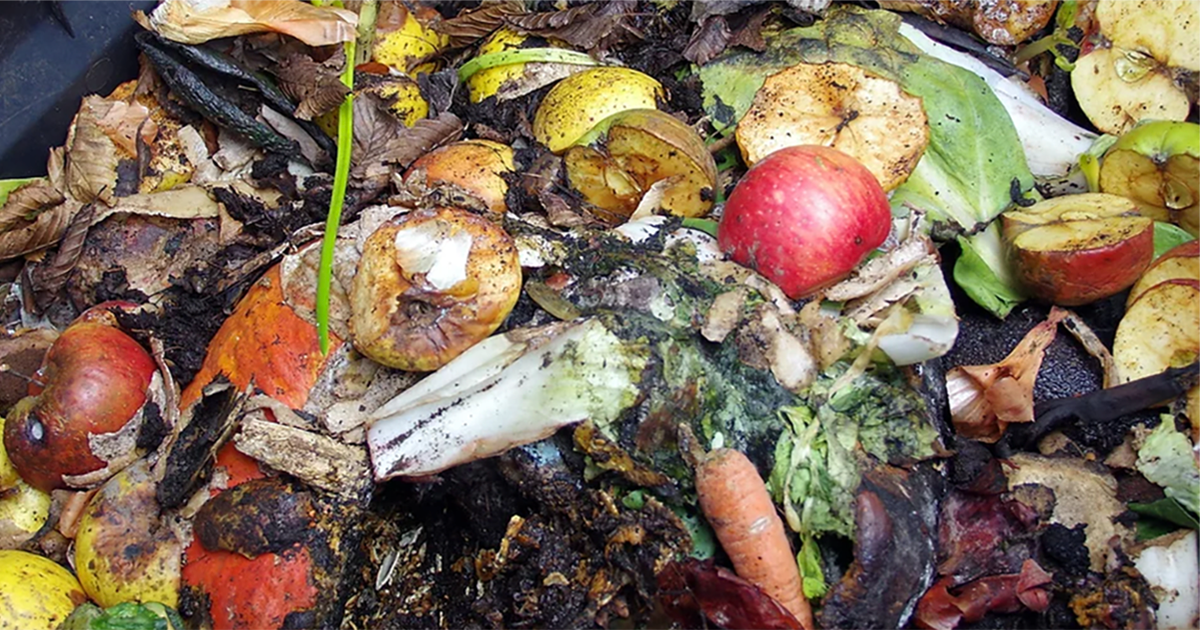Organics: How to Compost
October 21, 2022 •Circular Indiana

The lowest level of the food waste prevention hierarchy is composting.
Composting is a valuable process for breaking down food waste and returning nutrients to the soil, but efforts to reduce or repurpose food waste in other ways should always be taken first.
Outdoor Composting
One of the most basic types of composting is a pile or bin in your backyard. It can be as simple as a pile in your backyard, but if smells, pests, or pets are a concern, you can also make holes in the bottom of a large plastic storage container with a lid for. The holes help with drainage while the lid keeps pests out.
Step 1: Add Brown Matter
Add a starter mix of half soil and half brown matter to the pile or container. Brown matter is a critical source of carbon and includes dry organic waste like leaves, lawn clippings, low-quality paper (napkins, paper towels, paper egg cartons, etc), or even plain brown packing paper. It’s important to maintain the right ratio of soil, brown matter, and food waste to keep your compost healthy and not smelly.
Step 2: Mix in Green Waste
After setting up your compost, mix in green waste like food scraps and still green organic waste such as fresh cut grass, plant trimmings, and non-invasive weeds. While most food scraps and plants can be composted, avoid meat, dairy, bones, or diseased plants to prevent attracting pests.
Turn the pile or mix the container once a week to add oxygen that breaks down nutrients faster. The pile should be damp, but not soaking. Add water as needed to increase dampness or add brown matter to help dry soaked compost. Too much water, too much green material, and turning too infrequently can all increase the odor of your pile.
Indoor Composting
Although more challenging than outdoor composting, small-scale composting can be done indoors using machines or tubs/buckets. When composting indoors, however, it’s especially important to ensure the right mix of browns and greens and to mix frequently to add oxygen. Too much moisture, not enough browns, and lack of mixing generates methane and mold—factors that contribute to bad-smelling compost.
Subscription Composting
Vermicomposting is the process of composting by using a worm bin. This type of composting is particularly helpful to people without the space to compost and for people wanting to compost throughout the winter months. Vermicomposting is often done indoors and is low-maintenance—once your bin is set up, simply drain the “worm tea”—excess moisture from the compost that collects at the bottom of the bin—occasionally and the worms do the rest. Note that worms are living creatures who need to be fed organic material regularly and often live best in indoor environments to protect from extreme heat or cold.
Bokashi composting is a way to speed up the composting process using fermentation. This type of composting typically requires a bokashi compost kit, which can be purchased online or in some gardening stores. The kit should include a bin with a cover and drain spigot and bokashi bran, a mixture of microbes, sugar, water, and a high-carbon substance like wheat bran or coffee grounds. After a few weeks, the fermented food waste can be mixed with soil to finish composting or applied directly to outdoor plants.

